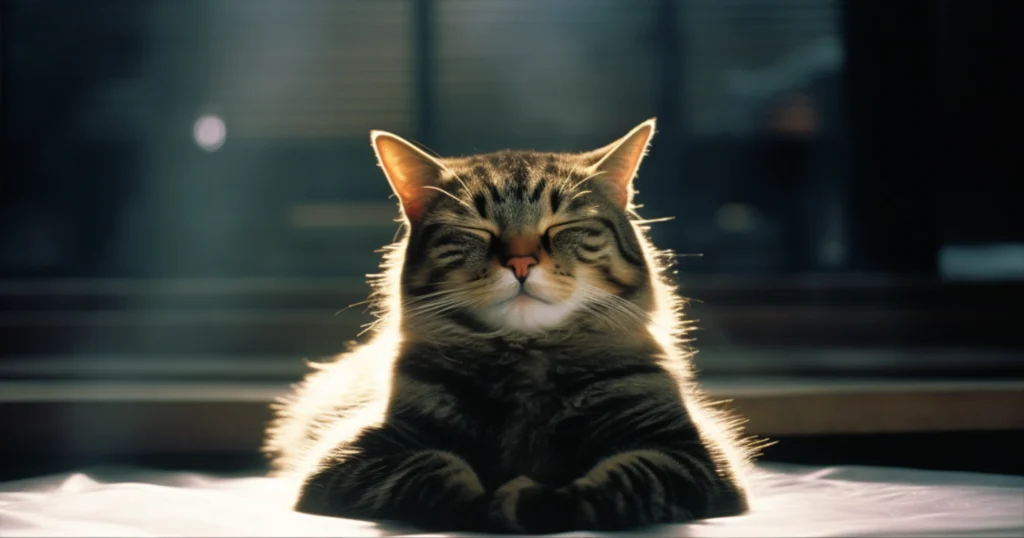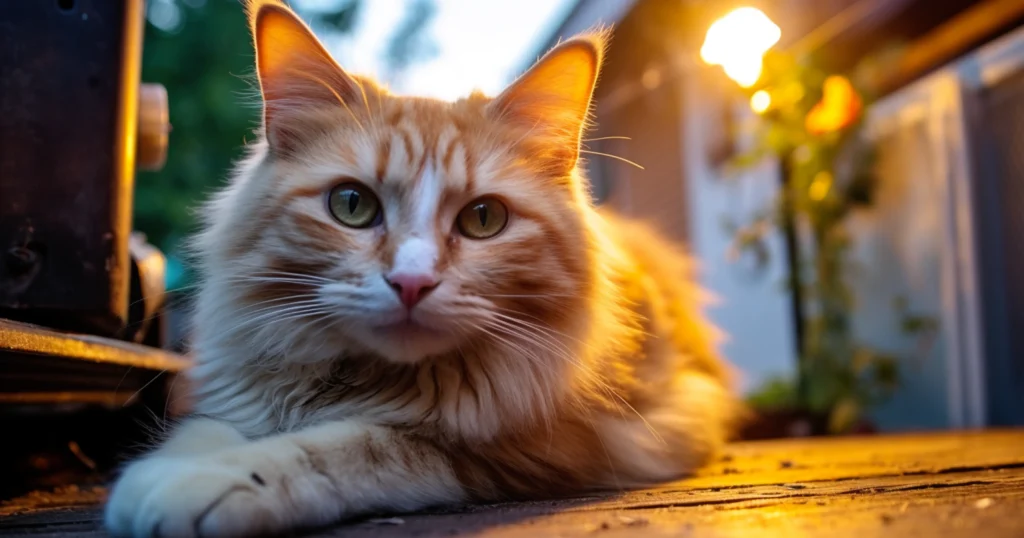Cats are known for their expressive eyes and unique behaviors. One quirky habit you may have noticed is your cat winking at you! This partially closed-eye look is a common feline behavior, but what does it mean when your cat winks?
In this article, we’ll explore the reasons behind your cat’s winks. Cats actually wink for a variety of reasons – it can be a sign of affection, a way to communicate, or related to medical conditions like dry eye. We’ll look at the meaning behind the different types of winks and blinks that cats make. Understanding why your furry friend winks can help you better interpret their body language and bond with them.
So why does your cat wink? Read on to learn what’s behind this cute and quirky cat behavior! We’ll uncover the secrets behind your cat’s winks and help you understand what your pet is trying to say.
Understanding The Cat’s Wink

A cat’s wink, often characterized by a slow, deliberate blink of one or both eyes, is quite different from a human wink. While we humans might wink for humor or flirtation, a cat’s wink serves a more complex purpose.
There are several forms a cat’s wink can take. The classic wink is a slow closing and opening of one eye. However, cats also perform a double wink, where they blink both eyes slowly but not at the same time. Another variant is the “half-wink,” where a cat partially closes one eye.
Regardless of the form, a cat’s wink isn’t just a random eye twitch—it’s a fascinating display of feline behavior with its own unique meanings and implications. Understanding these nuances can help us better comprehend our feline friends.
The Reasons Why Cats Wink

Affection
Cats often wink when they are feeling happy and affectionate. If your cat winks while purring, rubbing against you, or when being petted, it’s likely a sign of contentment and love. A wink while kneading or while sitting in your lap shows your cat is relaxed and comfy. Think of the wink as your kitty sending you a feline “hug” or “kiss”! This type of cat winking is them expressing positive emotions.
Communication
Cats rely on non-verbal cues like eye contact to communicate. Slow eye blinking is their way of saying “I love you” and establishing bonds. A cat’s wink can be a modified blink, part of this cat-human chat. It may signal trust if done in response to your presence or eye contact. Winking while playing can mean “this is all in good fun!” So while not an outright meow, your cat’s winking can be a way to connect.
The Role of the Palpebra Tertia
Cats have a third eyelid, known as the palpebra tertia or the nictitating membrane, which helps to protect their eyes and keep them moist. Sometimes, the involuntary movement of this membrane can look like a wink. If you notice your cat’s third eyelid showing, it’s best to consult a vet, as it can indicate underlying health issues.
Dry Eye Syndrome
Dry eye syndrome, or keratoconjunctivitis sicca, occurs when tear production is inadequate. The eyes become irritated and dry. Signs include eye redness, discharge, squinting, and yes – winking! The wink reflex helps distribute tears across the eye for lubrication. If your cat’s winking is accompanied by other dry eye symptoms, an exam and treatment for this condition may be needed.
Corneal Ulcers and Allergies
Like dry eyes, corneal ulcers and eye allergies can also make your cat wink. With corneal ulcers, winking helps protect the irritated cornea. Allergens like pollen cause itchiness and inflammation, leading to winking and squinting. In these cases, cat winking serves to soothe the discomfort. Diagnosing and addressing the underlying eye problem is key to stopping allergy and ulcer-related winking.
When a Cat’s Wink Might Indicate a Problem

While some cat winking is normal, excessive or abnormal winking can signal an underlying issue. Here are some signs of problematic winking:
- Winking combined with other symptoms like eye redness, swelling, discharge or squinting. This can indicate dry eye, allergies, or an eye injury.
- Frequent winking in just one eye. This could mean injury, infection or a foreign object stuck in that eye.
- Constant winking that doesn’t resolve. This points to chronic eye irritation or obstruction of the third eyelid.
- Winking accompanied by pawing at the eye. The eye is likely painful or uncomfortable.
- A new, sudden onset of frequent winking. This warrants an urgent vet visit to diagnose the cause.
- Winking along with lethargy, appetite changes, or other signs of illness. The winking may signal an underlying systemic problem.
While an occasional cat wink is harmless, persistent winking or winking with other symptoms should be evaluated by your vet. Proper treatment of eye conditions causing excessive winking can relieve your cat’s discomfort. With your vet’s help, your furry friend’s eyes can get back to blinking normally again!
Conclusion
In the world of felines, a wink isn’t just a blink—it’s a multifaceted tool for communication, a sign of affection, and sometimes, a symptom of health concerns. Understanding the nuances of “cat winking” can help us strengthen our bonds with our feline companions, ensuring their happiness and well-being.


